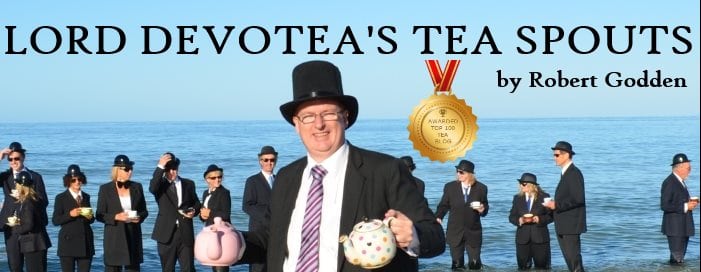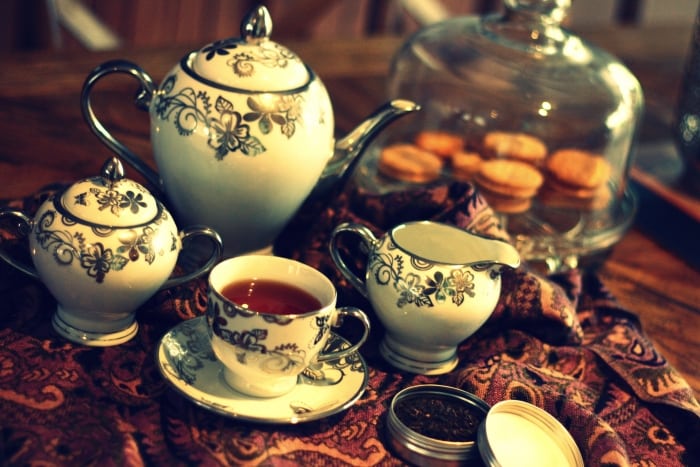For years, many of us have dedicated ourselves to the war on teab*gs.
One of my tea blogger friends posted the other day about another success in this war, but it perversely made me wonder: is it ever winnable?
And do we want to win?
And what do we want to win?
And who are we?
Phew, the questions are piling up.
Let’s start by defining the war on teab*gs.
To me, teab*gs are an evil. a swear word, which is why I always asterisk out the word. Given that at least six other people now do the same, I like to think of it as my eternal contribution to the war. Perhaps I’ll get a medal or something.
I’m not going to reference the thousands of words I’ve already written on the subject of why, but instead, let’s look at the two main fronts: the eating out front and the home front.
I’ll once again remind you why cafés, restaurants etc – even alleged ‘tea rooms’ on more than one occasion- use teabags: Laziness, stupidity and an incredible desire to cheat their customers.
I’m not even going to waste the time once again refuting the usual claims otherwise.
The key is, are we winning? Do we want to?
One at a time, we are winning. It’s quite simple: there are virtually no instances I’ve ever detected of these places going to teab*gs from loose leaf. But there are sporadic examples going the other way. Therefore, no matter how slowly, we are winning.
But again, do we want to?
Let’s suppose we are in the food district in a city we’ve never been in. There are eight restaurants in a row. How do you know if they are any good?
Start by eliminating any who use teab*gs.
My reasoning is simple: if they don’t trust themselves to make a decent cuppa from loose leaf, if they are not organised enough to demonstrate that a teapot, leaf and hot water is a process they can cope with, if they are not concerned enough about quality to make that happen, then I don’t trust them. I don’t trust them to have staff who know how to wash their hands after they visit the bathroom, who can read a ‘use-by’ date, a thermometer or an ingredient list. I don’t trust them to not serve me roast potatoes that were roasted a year ago in Poland and reheated, or lasagne made of horsemeat that they bought from a huge conglomerate.
In short, it’s a quality marker. Think of a teab*g as being in the same league as litter on the floor, dirty tables and walls and rude or uncaring staff. It tells you that you should eat elsewhere.
So teab*gs have an important function: they help us to define, and therefore support, the quality establishments.
Sometimes, when I’m explaining this, I’ve had restaurateurs say something like “people come from all over the city for my salmon, quinoa and kale quiche* and my chocolate crackle mousse, they don’t care a fig about getting a teab*g at the end. And besides, most of them have coffee.”
The stupidity of this is overwhelming: obviously people might enjoy the salmon whatever, but they are leaving there with the taste of supermarket tea in their mouths. And the idea that people who cannot make a teapot work should be allowed near an espresso machine is an odd one, to say the least.
So, I think at this point, I’m happy if we slowly win over the good places, and let the bad ones fester.
Last week I saw a tea grower talk about how selling his low-grade tea to teab*g companies was “just another revenue stream, a way to keep enough money coming in “, but there’s already a fallacy with that argument: if people weren’t putting it in bags, they could actually brew it loose. There are markets for loose low-grade tea that existed for years before the teb*g industry removed their source product.
So, that aside, how about the home front?
Sometimes, we visit people’s homes, and they have teab*gs. Well, it doesn’t really happen to me anymore, as anywhere I regularly go has a teapot and some loose leaf in their pantry. Often a gift from me.
So, what do we do?
Sometimes, we can introduce them to the leaf. It’s a gift that can last them a lifetime. It has to be handled carefully. I have previously described it in great detail here.
So, if everyone drank loose leaf, where would we find these opportunities to do good and change someone’s life?
On an individual level, a teab*g is a gateway drug to the addictive world of fine loose leaf tea. It is a clear signal, to us, that someone might be receptive to the good stuff.
Let’s do it.
And who are the “we” I keep referring to? It’s everybody who cares about tea. Everybody who wants the world to sigh contentedly every time it lifts it collective teacup. It’s you and me and our friends in tea.
Instead of worrying about the long term, let’s take the small victories, both eating out and with friends and acquaintances, and enjoy them without any need to finally and completely win the war. Because as long as we haven’t ‘won’, we get to keep on winning.
*obviously they don’t. Ewww.


It’s nice to know one in on the winning side.
Lovely post Robert!
Every “win” feels good. There are also issues around loose leaf tea that is stale and not prepared properly, but I now bring my own tea and find that often the server is interested in what I’m doing and drinking – so teaching moment I suppose.
Hear hear! One dinner party at a time. This weekend when the tea or coffee phase comes around at the friend’s house, I’ll politely offer my services as tea brewer. That’s when the loose leaf comes out.